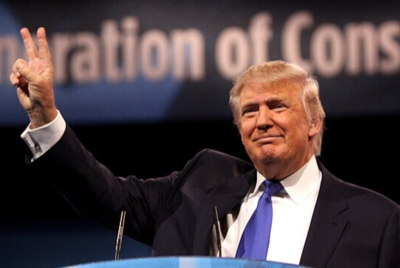Penny Coins End Production After Trump Calls Them 'So Wasteful': What Happens Now?
Pennies already in circulation will remain legal tender nationwide

The United States has officially halted production of circulating penny coins after nearly 230 years, following a directive from President Donald Trump, who branded the coin 'so wasteful' due to its rising production costs.
The final batch was struck at the Philadelphia Mint in November, prompting questions about how its phase-out will affect consumers, retailers and everyday cash transactions.
Why the US Penny Was Finally Stopped
The discontinuation of penny coins marks the end of a long debate over the coin's economic value. For several years, the cost of producing a US penny exceeded its face value.
According to US Mint data, it cost more than 3 cents to make a single 1-cent coin, resulting in significant losses for the Treasury. The rising price of zinc and copper pushed manufacturing costs higher, strengthening calls to halt production.
Trump publicly called the coin 'so wasteful' in February when announcing that he had instructed the Treasury to stop minting new pennies.
His decision aligned with longstanding recommendations from economists and government auditors, who argued that maintaining the penny drained federal resources without providing meaningful benefit to consumers.
Although regular circulation pennies are being phased out, collector editions may still be produced in limited quantities.
The Final Strike at the US Mint
On 12 November 2025, the Philadelphia Mint pressed the final circulating batch of US pennies, ending a production run that stretched back to 1793.
As reported by CNN, the final penny was minted under the supervision of US Treasurer Brandon Beach, who said the last coins pressed will be auctioned and that the final pennies put into circulation were actually struck in June.
Mint officials marked the occasion by highlighting the historical significance of the coin, which has appeared in countless transactions, savings jars and cultural references for more than two centuries.
The last run closed a chapter in American currency history, symbolising a shift towards modernised cash management and reduced costs.
What Happens to Existing Penny Coins
Despite the halt in production, penny coins already in circulation remain legal tender, and the US Mint says banks will continue accepting and distributing them while supplies last.
Pennies can stay in circulation for up to 30 years, meaning consumers are likely to keep receiving them in change.
The phase-out has also renewed interest among collectors, with final-year and final-minting pennies expected to see increased demand.
Households with jars of spare change are being encouraged to deposit or use their coins to keep them in circulation.
Will Prices Change Without Penny Coins?
With the discontinuation of penny coins, retailers across the United States are preparing to adjust cash payments.
Other countries, including Canada and Australia, adopted rounding rules after removing their smallest denominations, and similar guidance is expected domestically, with cash totals likely rounded to the nearest five cents. Digital and card payments will remain unchanged.
Some small businesses have raised concerns about updating tills and recalibrating pricing, though economists point out that previous international transitions had minimal impact on overall prices.
Public reaction is mixed, with some Americans nostalgic about the penny's disappearance and others welcoming the move as a cost-saving step.
References to 'penny candy' and spare-change rituals have also resurfaced on social media as the coin's future fades.
Economic Impact and Government Savings
Analysts estimate that stopping penny production will save the US government tens of millions of dollars each year. The move also reduces demand for zinc and copper, offering environmental benefits through decreased resource extraction.
Treasury officials say the Mint will reallocate resources to higher-demand denominations and modernise operations to improve overall efficiency.
What Happens Next in the Transition
The Treasury has issued guidance on the transition, with existing penny stocks expected to circulate for several years before naturally diminishing.
Officials expect that most cash transactions will adjust smoothly once rounding becomes standard practice.
The government has not ruled out future reviews of other low-value denominations as part of broader currency modernisation.
© Copyright IBTimes 2025. All rights reserved.





















